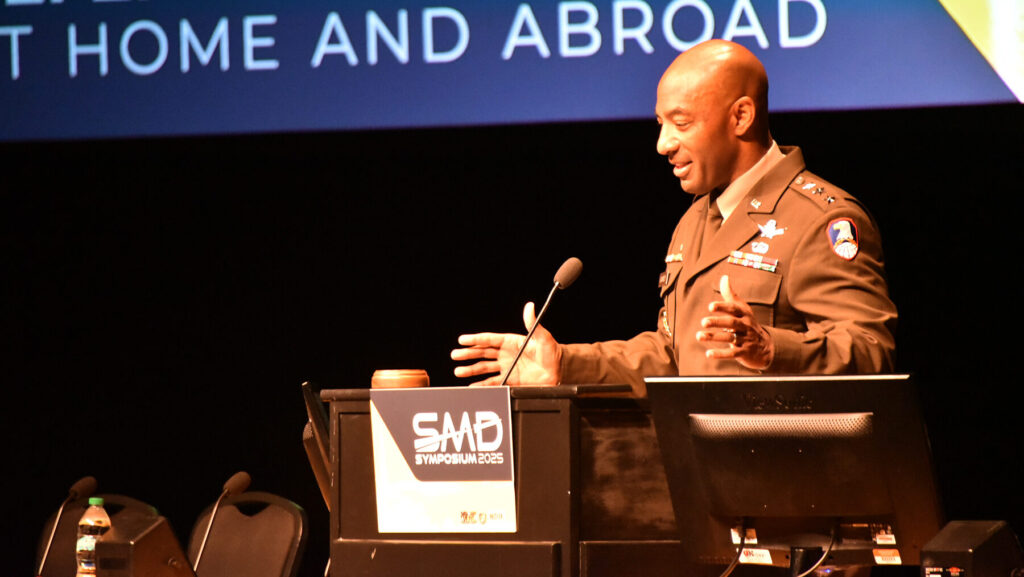
The US Army’s Space and Missile Defense Command (SMDC) has expanded its role in homeland defense, as confirmed by Lt. Gen. Sean Gainey during the AUSA 2025 conference. This shift comes as part of the Army’s broader strategy to enhance its contributions to air and missile defense within the newly established Western Hemisphere Command. The command is now tasked with a wider scope of responsibilities, including protection against various threats, such as drones.
“We did grow in responsibility,” said Lt. Gen. Gainey, head of SMDC, in an interview with Breaking Defense. The traditional ground-based midcourse defense mission, previously managed under NORTHCOM, has been broadened to encompass air and missile defense as a whole. This change signifies a major evolution in the Army’s approach to safeguarding the homeland.
As of October 2023, the 32nd Army Air and Missile Defense Command and the 263rd Army Air and Missile Defense Command have been reassigned to SMDC. These adjustments allow SMDC to shift its focus from ground-based midcourse defense to a more comprehensive air and missile defense strategy. “So, in that capacity, we now have all elements of the defense of the homeland,” Gainey explained. This new directive aims to enhance mission planning and execution for critical areas, including the National Capital Region.
The restructuring is part of a larger initiative to create a cohesive Western Hemisphere Command, which will integrate the Army North Command, Army South Command, and Force Command (FORSCOM). The strategic move aligns with the anticipated focus on homeland defense outlined in the upcoming National Defense Strategy, which is expected to emphasize a more comprehensive Golden Dome strategy for national security.
The Army is also finalizing its new Air and Missile Defense (AMD) Strategy 2040, which is currently undergoing final staffing and is expected to be approved by Army Chief of Staff Gen. Randy George and Secretary of the Army Dan Driscoll in November 2023. “It’s right now going through final staffing,” Gainey stated about the strategy.
This revamped strategy incorporates lessons learned from recent conflicts in Ukraine and the Middle East, particularly regarding the evolving drone threat. “It’s now more of an architecture approach where you have several systems with the ability to sense and engage several different places,” Gainey elaborated. He noted that the defense landscape is becoming increasingly complex, requiring systems capable of addressing multiple threats simultaneously, rather than relying on isolated solutions.
In summary, the expansion of SMDC’s role reflects the US Army’s commitment to adapting its defense strategies in response to emerging threats. As the military prepares for the challenges ahead, the focus on air and missile defense will be crucial for ensuring the safety and security of the homeland.






